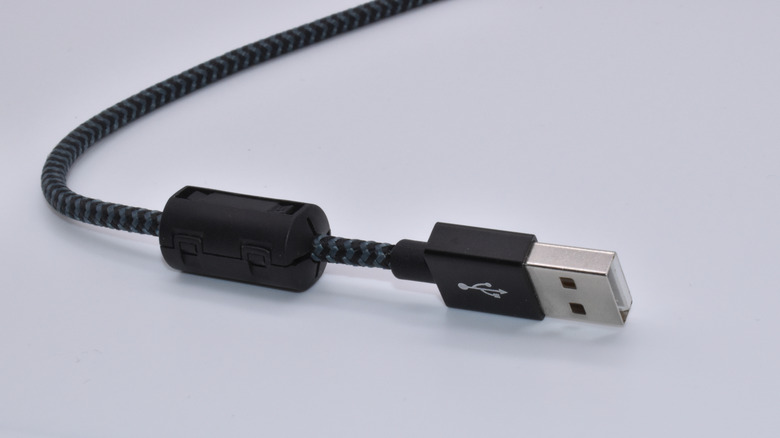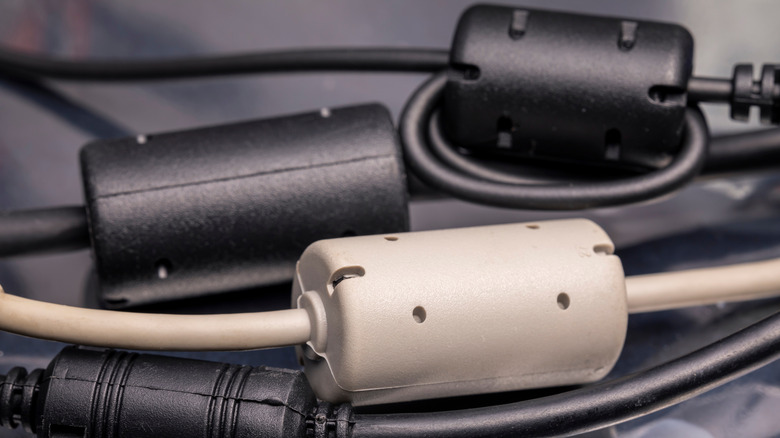Why Do Some Cables Have A Black Cylinder At The End? Here's What They're For
To charge or power your everyday devices, you likely use a variety of cables. One thing you may have noticed about some of these cables, especially the ones you use to charge laptops, connect keyboards, or power printers, is that they have a small black cylinder near the end. You might also have noticed them in certain USB and HDMI cables, as well as those used in medical equipment. But what exactly do these cylinders do?
The tiny cylinder on the cable goes by a lot of names, such as ferrite bead, ferrite core, ferrite choke, or EMI filter. As you can guess from the name, it's made of ferrite, which is a magnetic material composed of iron oxide. The main purpose of these ferrite beads is to block electromagnetic interference (EMI) and radio-frequency interference (RFI). These cylinders are either slipped over the cable during manufacturing or snapped on later. In any case, you'll usually find them positioned near the end of the cable.
So, now you know what those odd-looking bumps at the end of your cables are made of. Of course, you won't find them in every cable, as they are sometimes integrated into the internal design of the device or cable itself.
Why are ferrite beads or black cylinders on cables important?
When you use a cable, electric current flows from one end to the other, and in the process, it can produce electromagnetic interference (EMI) and radio frequency interference (RFI). This noise can affect other nearby devices. Similarly, your cable can also pick up electromagnetic interference from surrounding electronics, which can disrupt its performance. Ferrite beads help filter out unwanted noise by absorbing it and dissipating it as heat. Essentially, they allow the main low-frequency current to pass through the cable while blocking higher-frequency interference.
Without ferrite beads in cables, electromagnetic and radio frequency interference can cause various problems with your devices. For instance, a computer monitor might flicker, or you could hear a buzzing noise from nearby electronics. Additionally, this interference can also reduce efficiency and cause data loss. All in all, those black cylinders at the end of the cables ensure that your devices, be it laptop, printer, monitor, or anything else, can operate smoothly without disruption.

